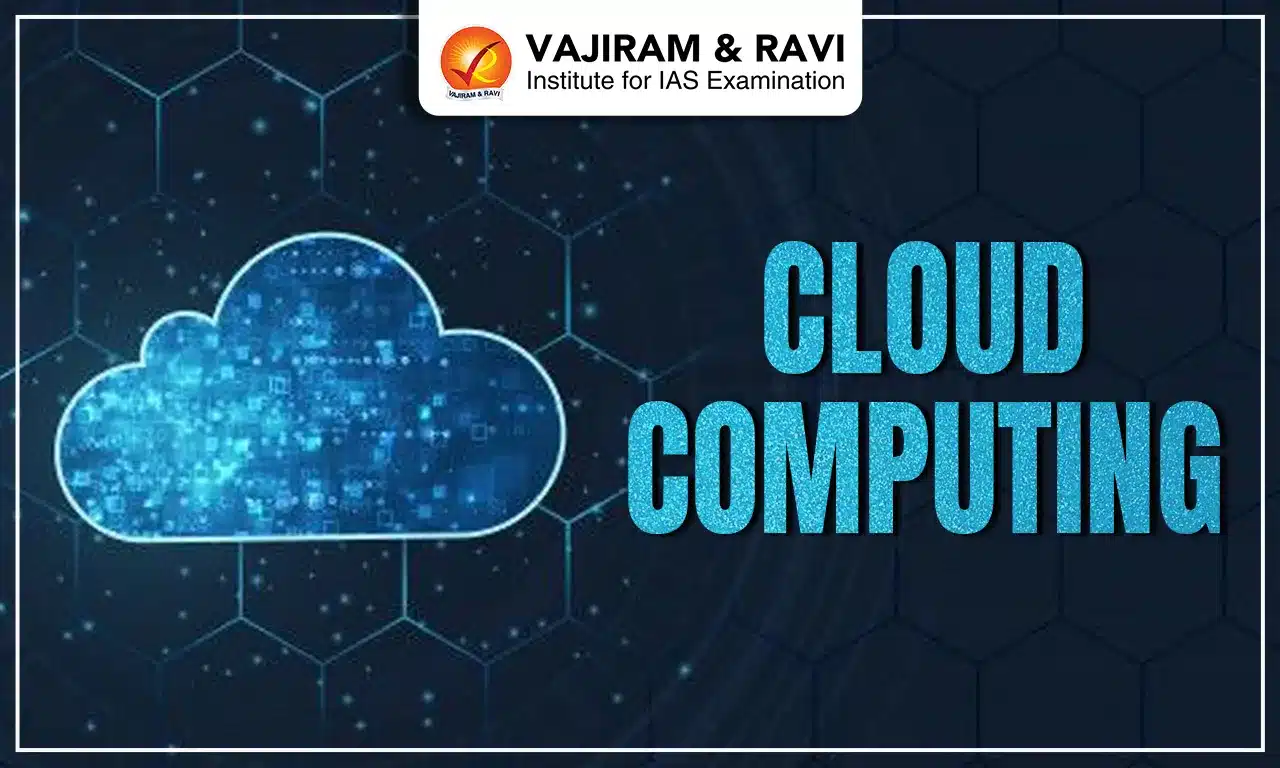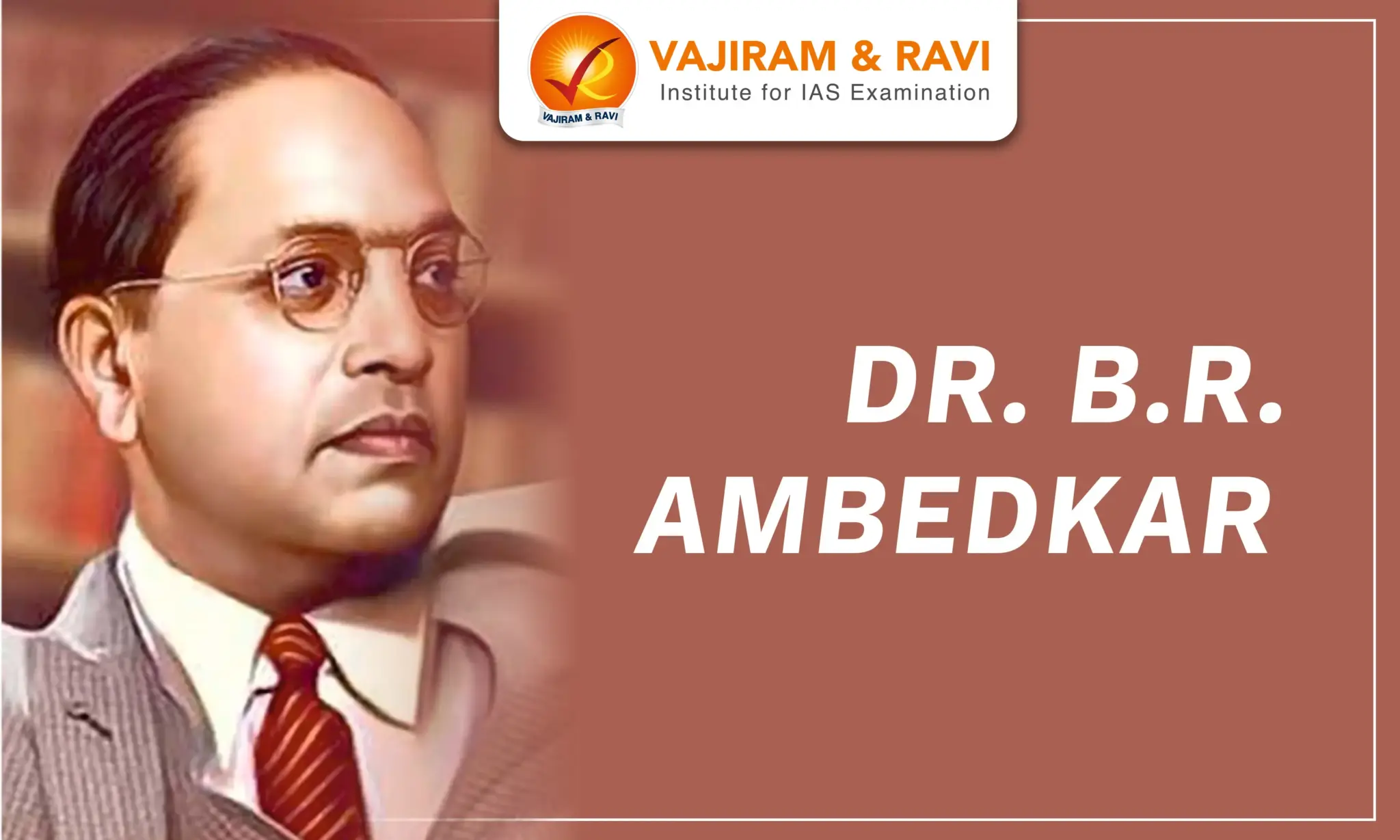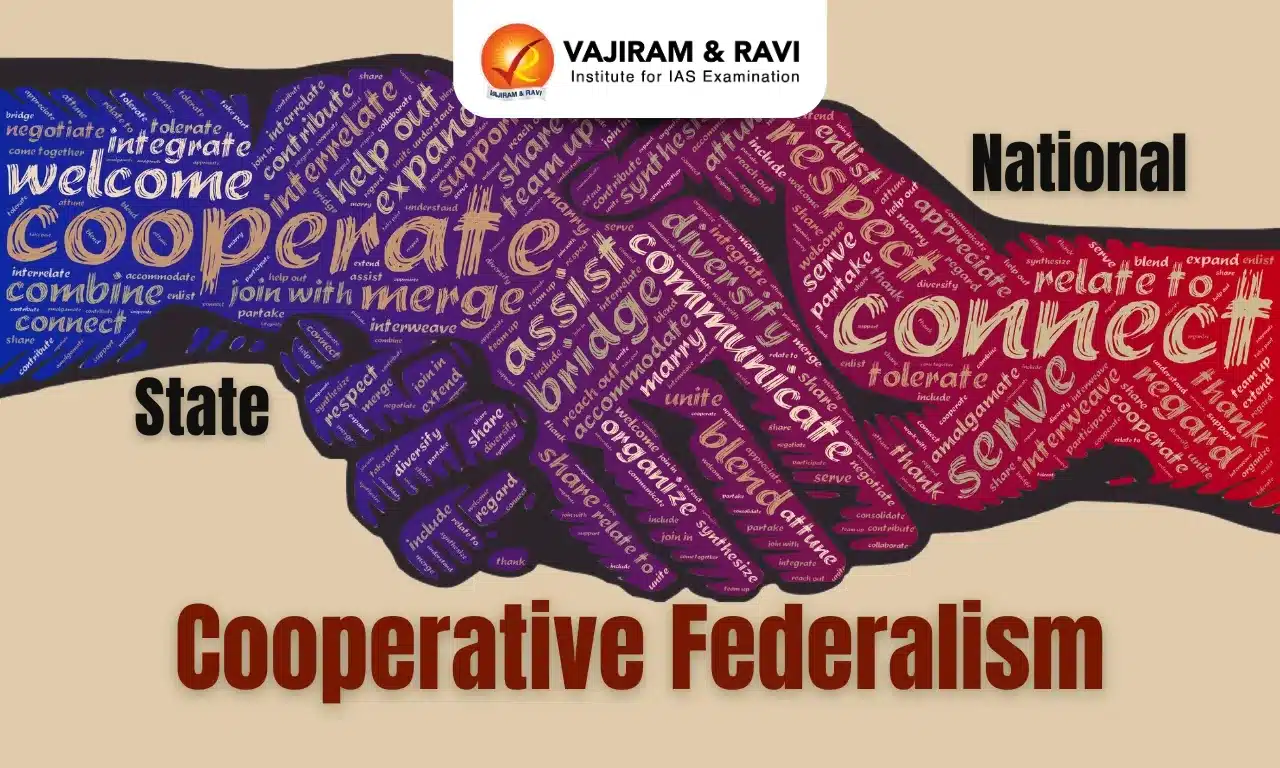Cloud computing is a revolutionary technology that allows individuals and businesses to access a vast array of computing services via the Internet. It has shifted the requirement of maintaining key services from local servers to remote servers. Cloud-based infrastructure enables users to store, manage, and process data on servers hosted in data centers around the world.
Cloud computing offers scalability, cost-efficiency, and convenience, neutralising the need for substantial upfront capital investment in hardware and software.
About Cloud Computing

Cloud computing is a model for delivering information technology services where resources are retrieved from the internet through web-based tools and applications rather than a direct connection to a server. It allows for on-demand access to computing power and data storage. Several aspects associated include.
Working Mechanism of Cloud Computing
The working mechanism of Cloud Computing includes:
- Centralised data storage: It centralises the storage of data on remote servers accessed via the Internet.
- Resource pooling: It pools physical and virtual resources, dynamically allocating them to users based on demand.
- Data retrieval and management: Users can retrieve, manage, and interact with their data and applications hosted on remote servers.
- On-demand availability: Provides scalable services that are available on-demand to users, often with pay-as-you-go billing.
- Virtualization: Employs virtualization technology to create and manage scalable virtual machines and environments.
- Automated management: Automates system maintenance, including backup, software updates, and network security.
- Accessibility: Allows for access from any device with internet connectivity, facilitating remote work and data sharing.
Cloud Computing Architecture
Cloud computing architecture refers to the components and subcomponents required for cloud computing. The architecture can be divided into two main parts: the Front End and the Back End, which are connected through a network, typically the Internet.
- Front End
- Client Devices:
- PCs, laptops, tablets, smartphones
- Internet of Things (IoT) devices
- Client Network:
- Internet access, corporate networks
- Cloud Applications:
- Web browsers
- Cloud-based applications (SaaS solutions)
- Client Devices:
- Back End
- Cloud Services:
- Software as a Service (SaaS)
- Platform as a Service (PaaS)
- Infrastructure as a Service (IaaS)
- Storage:
- Distributed storage systems
- Data backup and archiving
- Compute Resources:
- Virtual machines
- Servers
- Containers
- Networking:
- Virtual private networks (VPN)
- Load balancers
- Network switches
- Databases:
- SQL databases
- NoSQL databases
- Cloud Management and Security:
- Identity and access management (IAM)
- Authentication
- Encryption
- Security Protocols
- Cloud Services:
Benefits of Cloud Computing
- Flexibility: Access cloud services from any location with internet; scale resources as needed.
- Efficiency: Quickly develop and launch apps without the burden of managing infrastructure.
- Strategic advantage: Allow users to access the latest technological innovations via cloud services.
- Enhanced security: Benefit from comprehensive security measures provided by cloud services, often exceeding in-house data centre capabilities.
- Cost-effectiveness: Pay only for the computing resources used, thus saving investment in data centre capacity and freeing up IT for strategic projects.
Types of Cloud Computing
Types of cloud computing can be categorised into two categories- Deployment Models and Cloud Computing Services, which are listed below:
Deployment Models
- Public Cloud: Internet-based storage and access.
- Accessible to authorised users.
- No ownership of hardware or software components, only the provider manages all aspects.
- Examples: Amazon Web Services, Microsoft Azure.
- Private Cloud: Exclusively used by a single organisation.
- Runs on a private network, with limited access to internal users.
- Can be on-premises or hosted by third-party providers.
- Examples: VMware cloud, and certain AWS products.
- Hybrid Cloud: Integrates public and private cloud features.
- Allows for on-premises data storage while utilising the public cloud for sharing non-sensitive data.
- Example: NASA’s use of private cloud for sensitive data and public cloud for accessible information.
- Multi-Cloud: Combines services from different cloud providers within one architecture.
- Enables feature and function variety through diverse vendors.
Cloud Computing Services
Cloud Computing can deliver multiple things as a service, which is colloquially known as Everything as a Service (XaaS). The 'X' in XaaS is a placeholder that can represent anything. Some of the common models included in XaaS are mentioned in the table below:
| Name of Service | Key Aspects | Applications |
| Infrastructure as a Service (IaaS) |
- IaaS serves as the foundational layer in cloud computing services. - Users get access to virtualized computing resources over the internet, which can include servers, network connections, and data storage. - Offers high levels of control and flexibility in managing hardware resources. - Resembles traditional physical IT resources that are familiar to IT departments. |
- Web Hosting - Big Data Analysis - High-Performance Computing - E-Commerce Platforms - Mobile App Backends -Examples- Amazon E2C Services, MeghRaj Initiative, etc. |
| Platform as a Service (PaaS) |
- PaaS users are not required to manage or control the underlying cloud infrastructure. - Prioritises the deployment and management of applications. - Eliminates the need to manage hardware or operating system environments, streamlining application development. |
- Application Development - Business Process Management (BPM) - Business Analytics and Intelligence - Automated Backup and Disaster Recovery - Examples- Microsoft Azure App Service, AWS Elastic Beanstalk, Aadhaar authentication services, etc. |
| Software as a Service (SaaS) |
- Offers complete operational software products managed by the service provider. - Commonly applies to applications used by end-users such as email services. -Users are free from concerns about service maintenance or infrastructure management. - Users need to focus solely on how to utilise the application for their needs. |
- Customer Relationship Management (CRM) - Enterprise Resource Planning (ERP) - Email and Communication - Content Management System (CMS) -Examples- Microsoft Office 365, Dropbox, Google Workspace, and GSTN (Goods and Services Tax Network), DigiLocker, AEPS, BHIM |
Other than these models XaaS has expanded into many other areas, including:
- Storage as a Service (STaaS): Cloud-based data storage services.
- Database as a Service (DBaaS): Cloud database systems that manage data storage and retrieval.
- Network as a Service (NaaS): Network services like VPNs are delivered over the internet.
- Container as a Service (CaaS): Cloud service model that allows users to manage and deploy containers.
- Function as a Service (FaaS): A form of serverless computing where the cloud provider runs the server and dynamically manages the allocation of machine resources.
- Desktop as a Service (DaaS): Virtual desktops provided over the internet.
- Disaster Recovery as a Service (DRaaS): Cloud services that provide businesses with backup and recovery solutions.
Applications of Cloud Computing

Cloud Computing has revolutionised the IT industry. it has several applications such as:
- Secure storage: Individuals and businesses use the cloud for storing data securely and with easy accessibility from anywhere, e.g., Dropbox or Google Drive.
- Online marketplaces: E-commerce platforms use cloud computing to host and manage their online stores, e.g., Shopify.
- Telemedicine: Cloud-based applications facilitating remote medical consultations and services, e.g., Teladoc.
- Media streaming: Cloud platforms host streaming services for video and music, e.g., Netflix and Spotify.
- Learning management systems: Cloud-based platforms for delivering education and tracking progress, e.g., Blackboard Learn.
- Virtual meetings: Cloud services for hosting virtual meetings and conferences, e.g., Microsoft Teams.
- Device management: Platforms to manage and analyse IoT device data and operations, e.g., IBM Watson IoT.
- Public records management: Secure cloud databases for managing public records, e.g., the National Archives and Records Administration (NARA) in the US.
Cloud Computing in India
Cloud computing in India has witnessed exponential growth in recent years, transitioning from an emerging technology to a fundamental business resource. Key trends in India in the realm of Cloud computing include
- Growth in SaaS: There has been a substantial increase in Software-as-a-Service (SaaS) providers, making India the second-largest SaaS market after the US.
- Indian SaaS companies are expected to grow 20-25% per annum, aiming for $35 billion in ARR by 2027.
- Hybrid Cloud Adoption: Businesses in India are increasingly adopting hybrid cloud models, combining private and public clouds, to achieve greater flexibility and optimise costs.
- Data centres expansion: Indian companies like Reliance Jio and Bharti Airtel are also investing in building large-scale data centres to support cloud and edge computing services.
- Healthcare transformation: Cloud computing has been pivotal during the COVID-19 pandemic, facilitating telemedicine services and enabling remote diagnostics and data sharing across healthcare providers.
- E-commerce scalability: Platforms like Flipkart and Amazon India utilise cloud services to handle massive traffic spikes during festive seasons and sales, highlighting the cloud's scalability and reliability.
Government of India’s Initiative Associated with Cloud Computing
The government of India is always at the forefront when it comes to the usage of technology. In the realm of Cloud Computing, the government of India has taken several initiatives mentioned below:
| Area | Usage |
| E-Gram Panchayat | - The e-Panchayat scheme was launched to enhance government operations and governance quality. |
| Indian Railways |
- To mitigate ticketing losses, cloud technology has been adopted for data management. - RailCloud service as a high-speed connectivity solution initiated by Indian Railways. - Nivaran grievance portal as a service grievance platform for current and former railway employees. |
| Kisan Suvidha |
- The Kisan Suvidha portal was designed to provide farmers with essential information.
|
| Digilocker |
- A public cloud storage for Indian citizens provided by the government. - Enables instant digital verification and signing by the government. |
| Government e-Marketplace (GeM) |
- It utilises a multi-cloud architecture for expanded scalability. - it features a vast range of products and services for numerous buyer organisations. |
| National Highway Authority of India (NHAI) |
- NHAI introduced an AI-based big data analytics platform. -Documents are stored on a cloud data lake with GIS tagging for easy accessibility. |
| MeghRaj |
- Also known as GI Cloud, it aims to adopt cloud computing in government operations. - It will aid in the quickening of e-service delivery and optimise ICT expenditures. |
| Infrastructure Sector |
- Smart Cities Mission leverages cloud computing for local development and real-time data processing. -Cloud services act as a crucial backbone for Digital India's infrastructure. |
| Banking Sector |
- The RBI employs cloud solutions to achieve nationwide banking accessibility. -The Indian Banking Community Cloud (IBCC) is the banking industry's first community cloud. |
| Manufacturing Sector |
- Power applications include CRM, supply chain management, and data warehousing, among others. - Operational benefits include green IT and HMI (Human-Machine Interface) via cloud computing. |
| Telecom Sector |
- Cloud platforms address various business and technical needs in telecom. - It facilitates resource sharing, automation, and operation improvements. |
Challenges of Cloud Computing
The domain of cloud computing is not void of challenges. There are several challenges associated with cloud computing, such as:
- Cloud security: Security is a top concern in cloud computing.
- There are several risk factors, such as the potential for data breaches, API exploitation, credential theft, and authentication issues.
- There are also unclear practices in handling sensitive data by cloud providers.
- Cost unpredictability: Pay-as-you-go models and resource scaling lead to unpredictable costs.
- The lack of multiple cloud services can incur additional, unexpected charges.
- Lack of capability and expertise: Difficulty in finding qualified professionals to manage cloud technologies.
- Further, keeping up with cloud technology developments is a challenge for organisations.
- IT governance: Limited control over cloud infrastructure complicates IT governance.
- Also, managing risks, IT compliance, and data quality is more challenging.
- Compliance: Ensuring regulatory adherence when using third-party cloud storage is a challenging task.
- Further, data hosting is also crucial as the actual location of data aids in compliance.
- Management of multiple clouds: Handling various cloud environments can divide focus and resources as each cloud with distinct characteristics can complicate overall management.
- Building a private cloud: There are complexities in developing and managing private or hybrid clouds.
- Cloud migration: Transferring data or applications to the cloud can be problematic.
- There is a difficulty in transitioning to different cloud services. As there are substantial expenses and technical challenges in moving large datasets.
Last updated on November, 2025
→ Check out the latest UPSC Syllabus 2026 here.
→ Join Vajiram & Ravi’s Interview Guidance Programme for expert help to crack your final UPSC stage.
→ UPSC Mains Result 2025 is now out.
→ UPSC Notification 2026 is scheduled to be released on January 14, 2026.
→ UPSC Calendar 2026 is released on 15th May, 2025.
→ The UPSC Vacancy 2025 were released 1129, out of which 979 were for UPSC CSE and remaining 150 are for UPSC IFoS.
→ UPSC Prelims 2026 will be conducted on 24th May, 2026 & UPSC Mains 2026 will be conducted on 21st August 2026.
→ The UPSC Selection Process is of 3 stages-Prelims, Mains and Interview.
→ UPSC Result 2024 is released with latest UPSC Marksheet 2024. Check Now!
→ UPSC Prelims Result 2025 is out now for the CSE held on 25 May 2025.
→ UPSC Toppers List 2024 is released now. Shakti Dubey is UPSC AIR 1 2024 Topper.
→ UPSC Prelims Question Paper 2025 and Unofficial Prelims Answer Key 2025 are available now.
→ UPSC Mains Question Paper 2025 is out for Essay, GS 1, 2, 3 & GS 4.
→ UPSC Mains Indian Language Question Paper 2025 is now out.
→ UPSC Mains Optional Question Paper 2025 is now out.
→ Also check Best IAS Coaching in Delhi
Cloud Computing FAQs
Q1. What is cloud computing?+
Q2. How does cloud computing work?+
Q3. What are the types of cloud services?+
Q4. What are the benefits of cloud computing?+
Q5. What is the difference between public and private clouds?What is the difference between public and private clouds?+
Tags: cloud computing quest

















